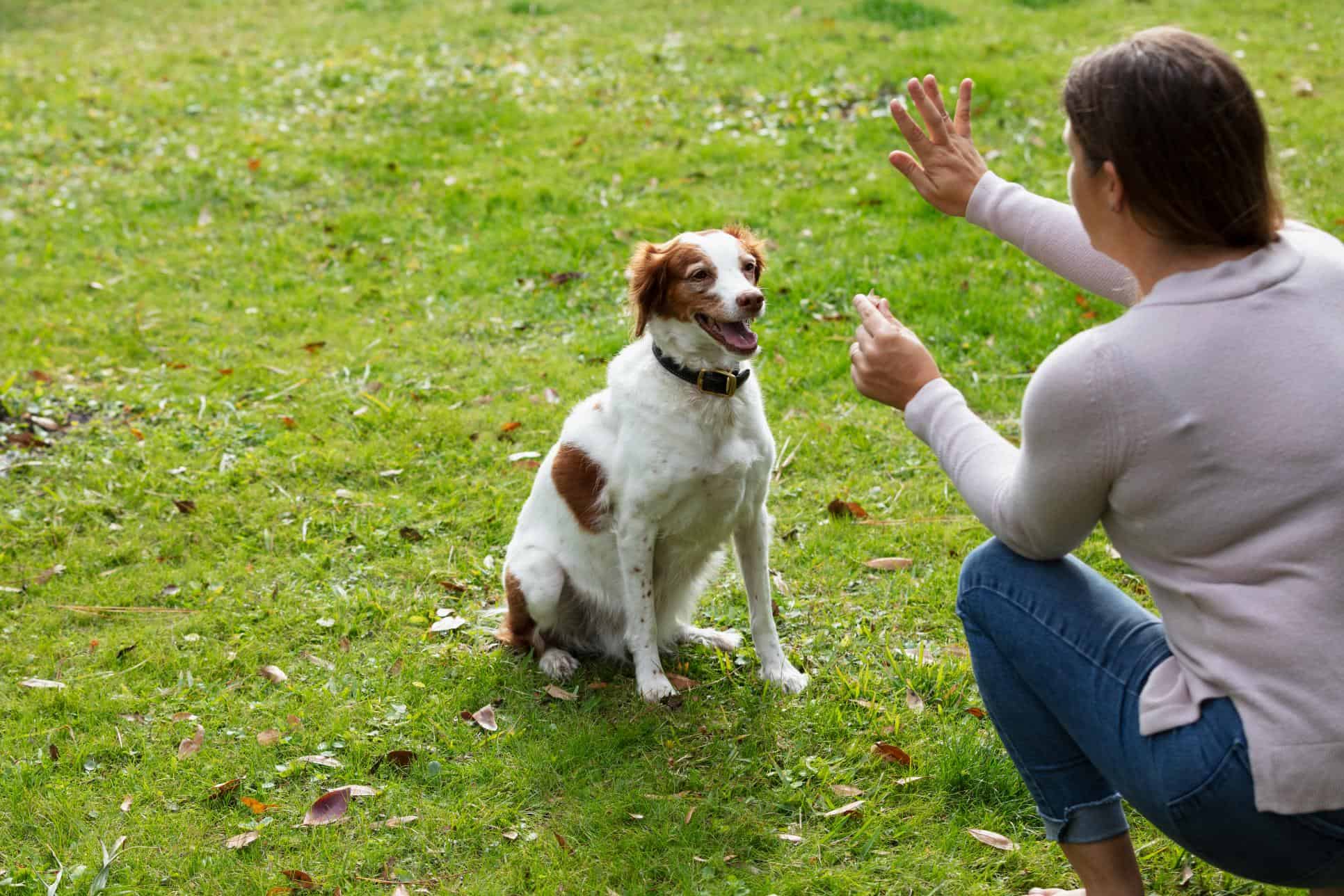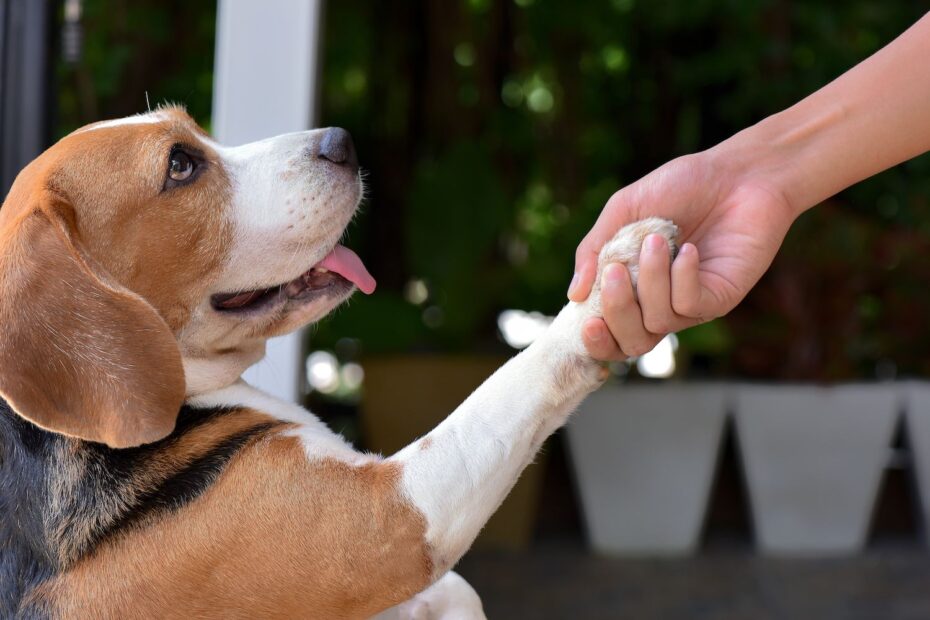Positive reinforcement for pets is a powerful training method. It rewards good behavior, making pets happier and more obedient.
Training pets can be challenging, but positive reinforcement makes it easier. This method focuses on rewarding pets for their good behavior, encouraging them to repeat it. Unlike punishment-based training, positive reinforcement builds trust and strengthens the bond between you and your pet.
Whether you have a dog, cat, or bird, using rewards like treats, praise, or toys can make training sessions enjoyable for both you and your furry friend. This approach not only helps in shaping desired behaviors but also boosts your pet’s confidence and happiness. Dive into the world of positive reinforcement and discover how it can transform your pet’s behavior and your relationship.
Also Read

Credit: www.companionanimalpsychology.com
Introduction To Positive Reinforcement
Positive reinforcement is a powerful tool for training pets. It involves rewarding desired behaviors to encourage their repetition. This method fosters a positive relationship between you and your pet. It is humane, effective, and encourages your pet to learn in a stress-free environment.
Concept And Benefits
Positive reinforcement relies on rewarding good behavior. This can be through treats, praise, or playtime. The goal is to make the behavior more likely to occur. Rewards must be given immediately after the desired action. Timing is crucial. It helps your pet connect the behavior with the reward. This approach is gentle and respectful. It strengthens the bond between you and your pet. It also makes training a fun experience for both of you. Pets trained with positive reinforcement tend to be more confident and happy. They are eager to learn and please their owners.
Why It Matters For Pets
Positive reinforcement is important for pets. It creates a safe learning environment. Pets do not fear making mistakes. They learn what is expected of them. This method reduces anxiety and stress. Pets understand which behaviors are rewarded. They are more likely to repeat those behaviors. This leads to consistent and reliable training results. Positive reinforcement also improves communication between you and your pet. It helps you understand their needs and desires. Training sessions become a bonding time. Your pet feels valued and loved. This method promotes a healthy and happy relationship.
Understanding Your Pet’s Behavior
Understanding your pet’s behavior is vital for building a strong bond. Pets communicate their needs and emotions through actions. Recognizing these behaviors helps in effective training and care. Positive reinforcement plays a key role in shaping these behaviors.
Common Behavioral Issues
Pets may exhibit a range of behavioral issues. Common ones include excessive barking, aggression, and chewing. These behaviors often stem from various needs or triggers. Addressing these issues early can prevent further problems.
Identifying Triggers
Identifying triggers is crucial for understanding your pet’s behavior. Triggers can be environmental, such as loud noises or unfamiliar people. They can also be emotional, like anxiety or fear. Observing your pet helps in pinpointing these triggers.
Once you identify the triggers, you can work on reducing their impact. This makes positive reinforcement more effective. Consistency and patience are key in this process.
The Science Behind Positive Reinforcement
Positive reinforcement is a powerful method to train pets. It involves rewarding desired behaviors, encouraging pets to repeat these actions. Understanding the science behind positive reinforcement helps maximize its benefits.
How It Works
Positive reinforcement uses rewards to increase the likelihood of a behavior. When a pet performs a desired action, it receives a reward. This could be a treat, praise, or a toy. The pet associates the behavior with something positive, making it more likely to repeat it.
Consistency is crucial. Rewards should be given immediately after the desired behavior. This helps the pet understand the connection between the action and the reward. Over time, the pet learns to perform the behavior without needing a reward every time.
For example, teaching a dog to sit involves giving a treat each time it sits on command. After several repetitions, the dog learns that sitting leads to a treat. Eventually, the dog sits on command, even without a treat.
Psychological Benefits
Positive reinforcement has several psychological benefits for pets. It builds trust between the pet and owner. Pets feel safe and loved, knowing they are rewarded for good behavior. This trust strengthens the bond between pet and owner.
It also reduces anxiety and fear. Pets trained with positive reinforcement are less likely to develop behavioral issues. They are more confident and secure. Positive reinforcement creates a positive learning environment. Pets are eager to learn and perform new tasks.
Positive reinforcement encourages mental stimulation. Pets enjoy the challenge and mental effort involved in learning new behaviors. This keeps their minds sharp and engaged.
Overall, positive reinforcement promotes a healthy, happy, and well-behaved pet. It is a humane and effective way to train pets, ensuring their well-being and happiness.
Effective Reward Systems
Positive reinforcement is an effective way to train pets. It involves rewarding good behavior to encourage it. Effective reward systems are key. They make training enjoyable for pets and owners. This section explores how to choose the right rewards and the importance of timing and consistency.
Choosing The Right Rewards
Rewards should be something your pet loves. Treats are a common choice. Small, tasty snacks work well. Toys can also be rewards. Some pets prefer playtime over treats. Praise and affection can be powerful too. Find what motivates your pet most.
Timing And Consistency
Timing is crucial for positive reinforcement. Give the reward immediately after the desired behavior. This helps your pet link the action with the reward. Consistency is just as important. Always reward good behavior in the same way. This builds a clear connection for your pet.
Effective reward systems rely on choosing the right rewards and ensuring good timing and consistency. Following these guidelines will help your pet learn quickly and happily.
Training Techniques And Strategies
Positive reinforcement for pets focuses on rewarding good behavior. Treats, praise, and playtime encourage pets to repeat actions. This technique builds trust and strengthens the bond between owner and pet.
Training pets using positive reinforcement can be rewarding and fun. It builds a strong bond between you and your pet. The key is consistency and patience. You reward good behavior to encourage repetition. Let’s explore some techniques and strategies.Basic Commands
Start with simple commands like sit, stay, and come. Use treats or praise as rewards. Say the command clearly and wait for the response. When your pet follows the command, give a treat or praise. Repeat this process several times daily. Keep sessions short to hold their interest.Advanced Training Tips
Once basic commands are mastered, move to advanced skills. Teach tricks like roll over or fetch. Use the same reward system. Break down complex tasks into smaller steps. Reward each successful step. Gradually increase the difficulty. Always stay patient and encouraging. Your pet will enjoy learning and performing new tricks. “`Building A Strong Bond
Positive reinforcement is a powerful tool for training pets. It helps in building a strong bond between pets and their owners. This bond is essential for a happy and harmonious relationship. Let’s explore how positive reinforcement fosters trust, respect, and an emotional connection.
Trust And Respect
Trust is the foundation of any strong relationship. Using positive reinforcement, you can build trust and respect with your pet. When your pet receives rewards for good behavior, they start to associate you with positive experiences. This creates a sense of trust.
Respect follows trust. When your pet trusts you, they are more likely to listen and obey your commands. This mutual respect enhances your bond. It also makes training sessions enjoyable for both of you. The key is consistency. Make sure to reward your pet every time they exhibit desired behavior.
Emotional Connection
Positive reinforcement helps in creating a strong emotional connection with your pet. Pets are sensitive to their owners’ emotions. When they receive positive feedback, it boosts their confidence and happiness. This emotional connection makes your pet feel loved and valued.
Spending quality time together during training sessions strengthens this bond. Use treats, toys, and praise to reward your pet. These moments of joy create lasting memories. They also reinforce the emotional bond between you and your pet. This bond is essential for a fulfilling relationship.
Overcoming Challenges
Positive reinforcement for pets is a wonderful method to train and bond with your furry friends. Still, it can be challenging. Many pet owners face setbacks and need to stay patient and persistent. In this section, we discuss how to overcome common challenges.
Dealing With Setbacks
Setbacks are common in pet training. Your pet might not always respond as expected. It’s important to stay calm and not get frustrated. Here are some tips to handle setbacks:
- Identify the cause: Try to understand why your pet is not responding. Is it distracted? Is the environment too noisy?
- Adjust the environment: Sometimes, changing the surroundings can help. Train in a quiet area.
- Break it down: Simplify the task. Train in smaller steps to make it easier for your pet.
- Stay positive: Always use a calm and encouraging tone. Your pet will feel your energy.
Patience And Persistence
Training a pet requires a lot of patience and persistence. Results may not come overnight. Here are some strategies to stay on track:
- Set realistic goals: Break down training into small, achievable steps. Celebrate small victories.
- Consistent schedule: Stick to a regular training routine. Pets thrive on consistency.
- Reward often: Use treats and praise frequently to reinforce good behavior.
- Stay calm: Your pet will sense your emotions. Always be calm and collected.
Patience and persistence are key. Your pet will learn with time and consistent effort.
Real-life Success Stories
Positive reinforcement transforms pets’ behavior and strengthens bonds with their owners. Real-life success stories highlight the effectiveness of this method. These stories provide inspiration and practical insights for pet owners.
Case Studies
Meet Bella, a rescue dog with severe anxiety. Her owner used positive reinforcement to help her. They rewarded calm behavior with treats and praise. Over time, Bella’s anxiety reduced significantly. She now enjoys social interactions and has a happier life.
Another success story is about Max, a cat who scratched furniture. His owner introduced a scratching post and rewarded Max for using it. Max soon preferred the scratching post over furniture. This simple change improved their home environment.
Lessons Learned
Consistency is key. Bella’s and Max’s stories show that regular positive reinforcement works. Small, consistent rewards lead to big changes over time. Patience is also essential. Positive reinforcement may take time but results are worth the wait.
Clear communication helps pets understand expectations. Simple commands and immediate rewards guide pets effectively. Building trust is another critical lesson. Trust strengthens the bond between pets and owners. Positive reinforcement fosters this trust through kind and encouraging interactions.
Resources And Tools
Positive reinforcement is a powerful method for training pets. It rewards good behavior, making pets more likely to repeat it. To help you get started, there are many resources and tools available. These can guide you through the process and ensure your pet learns quickly and happily.
Books And Online Courses
Books and online courses are excellent resources for positive reinforcement training. They offer detailed instructions and examples, making it easy to understand and apply the techniques.
- Books: Many books provide step-by-step guides and tips. Some popular titles include “Don’t Shoot the Dog!” by Karen Pryor and “The Power of Positive Dog Training” by Pat Miller.
- Online Courses: Websites like Udemy and Coursera offer courses on pet training. These courses include video lessons, quizzes, and forums for interaction.
Professional Trainers
Professional trainers can provide personalized guidance. They have experience and can tailor their methods to your pet’s specific needs. This can be especially helpful for more challenging behaviors.
- Consider seeking a certified trainer. Look for certifications from organizations like the Association of Professional Dog Trainers (APDT).
- Many trainers offer group classes and one-on-one sessions. Group classes can be a great way for your pet to socialize while learning.
| Resource Type | Examples |
|---|---|
| Books | “Don’t Shoot the Dog!”, “The Power of Positive Dog Training” |
| Online Courses | Udemy, Coursera |
| Professional Trainers | APDT Certified, Group Classes |

Credit: www.facebook.com
Conclusion And Next Steps
Positive reinforcement strengthens the bond between you and your pet. It encourages good behavior through rewards and praise. Consistent training leads to a happier and well-behaved companion.
Positive reinforcement is a powerful tool for pet training. It helps build trust and strengthens the bond between you and your pet. Now that you understand its benefits, let’s summarize the key points and discuss the importance of consistency.Summarizing Key Points
Positive reinforcement involves rewarding good behavior. This could be with treats, praise, or playtime. It encourages pets to repeat the desired behavior. Unlike punishment, it does not involve negative consequences. This approach creates a happy and stress-free environment for your pet.Encouraging Consistency
Consistency is crucial in positive reinforcement. Always reward good behavior immediately. This helps your pet understand which actions are being rewarded. Use the same rewards and commands each time. This reduces confusion and speeds up learning. Stay patient and keep training sessions short and fun. This maintains your pet’s interest and motivation. “`
Credit: www.wvcvet.com
Frequently Asked Questions
What Is Positive Reinforcement For Pets?
Positive reinforcement involves rewarding pets for desired behaviors. This encourages them to repeat those behaviors. It’s effective and humane.
How Does Positive Reinforcement Work?
Positive reinforcement works by associating good behavior with rewards. Pets learn that good actions bring treats or praise.
What Rewards Can Be Used For Positive Reinforcement?
Treats, toys, and verbal praise are common rewards. Choose what your pet loves most for best results.
Can Positive Reinforcement Help With Training?
Yes, positive reinforcement is a powerful training tool. It helps pets learn commands and good behaviors quickly.
Conclusion
Positive reinforcement is a powerful tool for training pets. It builds trust and strengthens bonds. Rewards like treats or praise encourage good behavior. Consistent, positive methods lead to happier, well-behaved pets. Start small, be patient, and watch your pet thrive.
Celebrate their successes, no matter how tiny. Your pet will love the journey, and so will you. Embrace positive reinforcement today for a joyful relationship with your furry friend.




